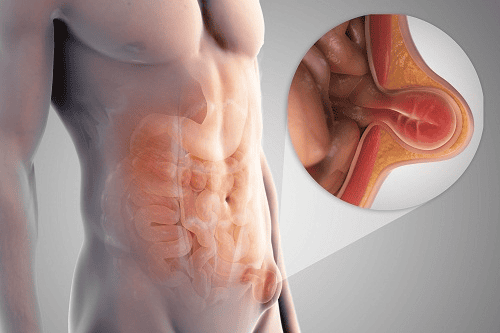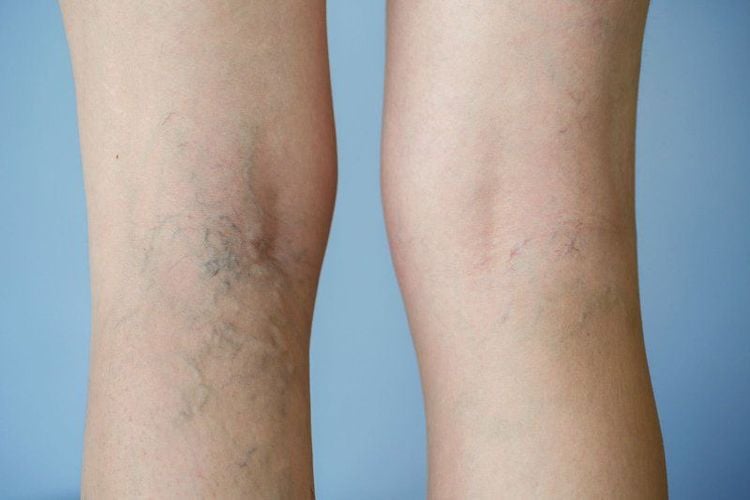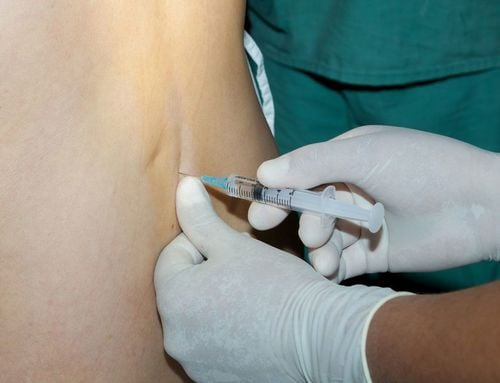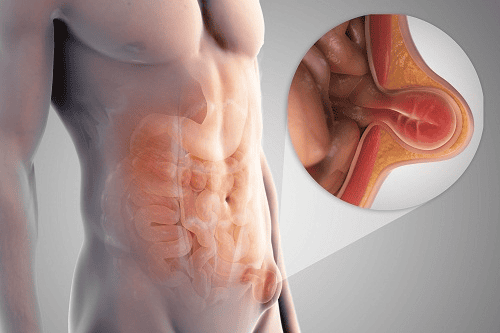This is an automatically translated article.
Symptoms of femoral hernia can be confused with some inguinal hernias. Femoral hernia mainly occurs in women, especially those who have given birth many times. Abdominal muscles are weak due to multiple pregnancies, the pelvis stretches a little during childbirth. Those are the two main factors that make the fascia and ligaments of the Scarpa triangle weak, easily causing hernia. Therefore, femoral hernia is acquired rather than congenital (very rare in children).1. Typical symptoms of femoral hernia
1.1 Functional symptoms Thigh bulge: This mass sometimes does not, usually appears when walking a lot, pain when stretching the leg.Sometimes see swelling of one leg in the afternoon.
Other manifestations (discomfort in the groin, thighs) are less noticeable.
Physical symptoms are less obvious, femoral hernia is back or strangled, so many patients come to the emergency without knowing they have a hernia. Therefore, when seeing a female patient with a mechanical intestinal obstruction with unknown cause, it must be thought that it may be due to femoral hernia.
1.2 Physical symptoms Small bulge in the upper - inner corner of the triangle of Scarpa has the following characteristics:
Round or oval in shape, not very large and located below the inguinal crease. Soft, painless. It is possible to reduce or remove the bulge, but not as easily as an inguinal hernia. Knock loudly, hear the sound of the brain if the intestines go down. The pulse is captured: The inguinal artery is lateral to the bulge.

Có hình tròn hoặc bầu dục, không to lắm và nằm ở dưới nếp lằn bẹn
2. Distinguishing femoral hernia from inguinal diseases
Symptoms of femoral hernia are easily confused with those of inguinal diseases. Here are the basic points to distinguish these pathologies.The bulge of the inguinal hernia is above the inguinal crease. The bulge of the femoral hernia is below the inguinal crease (under the femoral arch). In obese patients, determining the femoral arch is difficult, so a line from the pubic spine to the anterior superior iliac spine is called the Malgaigne line.
In the femoral hernia, the mass is bulging below the Malgaigne line, in the inguinal hernia, the mass is above this line.
Some other typical symptoms of inguinal diseases.
2.1 Inguinal lymphadenitis Fever, swelling, heat, redness, local pain. Blood tests: white blood cells increased, neutrophils increased. 2.2 Cold Abscess A bulge is a collection of fluid. The bulge is outside the femoral artery, because fluid rushes from the spine down the iliac musculature into the thigh. 2.3 Venous bulging block The bulge also enlarges when pushing, coughing or walking, pressing also disappears, but has the following characteristics:
Accompanied by varicose veins of the lower extremities. The bulge is soft, shrinks, but when you remove your hand, the bulge appears quickly. Put a finger under the bulge, it shrinks; but if you press your finger on top, the bulge gets bigger and bigger. If the bulge cannot be deflated, it should be distinguished from: Fatty tumor: No pain, no push into the abdomen. Varicose veins of the lower extremities: varicose veins along the extremities, all the way down from top to bottom, easily flattened when lying down. Inguinal artery aneurysm or inguinal cyst.

Khối phồng tĩnh mạch kèm theo giãn tĩnh mạch chi dưới
Thanks to the attentive care of the doctors and the method of enhancing postoperative recovery after surgery at Vinmec Ha Long, the patient recovered quickly. Only 1 day after surgery, she was able to eat and exercise lightly, and was discharged after 5 days.
(ERAS) is an early recovery program after surgery being applied by many hospitals around the world, and has started to be applied in some hospitals in Vietnam. Patients will be applied comprehensive nutritional care methods to prepare well for surgery, restore function before and after surgery, choose the optimal surgical method and apply methods to reduce pain. advanced pain. Therefore, ERAS minimizes complications, helps patients recover quickly after surgery and discharge early.
Customers can go directly to Vinmec Ha Long to visit or contact hotline 0203 3828 188 for support.













